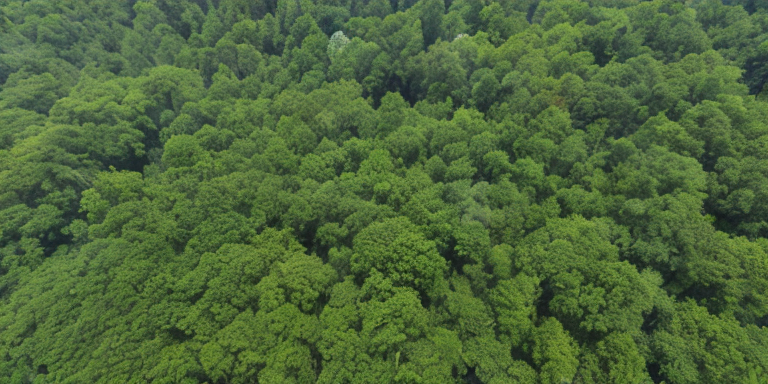The Forests on Fire: Climate Change and Its Impact on Our Planet’s Lungs
Forests are the lungs of our planet, providing us with clean air, water, and a home to millions of species of plants and animals. However, our forests are under threat from climate change, which is causing significant disruptions to their ecosystems. Climate change is a global phenomenon that is affecting the entire planet, and forests are not immune to its effects.
The world’s forests are facing a range of challenges due to climate change, including rising temperatures, changing weather patterns, and more frequent and intense wildfires. These factors are causing significant disruptions to forest ecosystems, which can have far-reaching consequences for the planet.
Forests are essential for regulating the Earth’s climate, as they absorb and store carbon dioxide, a greenhouse gas that contributes to global warming. However, as temperatures rise, forests are becoming less effective at sequestering carbon, which can lead to even more warming. In addition, wildfires, which are becoming more frequent and intense due to climate change, release large amounts of carbon dioxide into the atmosphere, further exacerbating the problem.
The impact of climate change on forests is not limited to carbon sequestration. Changing weather patterns are causing disruptions to forest ecosystems, making them more vulnerable to disease, invasive species, and other threats. For example, rising temperatures have led to the pine beetle infestation in North America’s coniferous forests, resulting in the loss of millions of acres of forest land. Similarly, changing seasons are leading to an increase in wildfires in Europe’s deciduous forests, which reduces their ability to sequester carbon.
Australia’s rainforests are also under threat from climate change, with rising temperatures and extreme weather conditions leading to massive bushfires that are destroying large swathes of forest land. These fires not only threaten the survival of the forests but also the millions of species that call them home.
Despite these challenges, there is hope. Scientists and policymakers are working to combat the effects of climate change on forests through reforestation projects and forest conservation efforts. These measures can help to mitigate the effects of climate change on forests and protect them for future generations.
However, it is not just up to scientists and policymakers to take action. We can all contribute to these efforts in our daily lives by reducing our carbon footprint, supporting reforestation projects, and advocating for policies that protect our forests. By working together, we can help to ensure that our forests continue to thrive and provide us with the clean air and water that we need to survive.
In the next section, we will explore in-depth how climate change is disrupting forest ecosystems, making them more vulnerable to wildfires, disease, and invasive species.
The Impact of Climate Change on Australia’s Rainforests
Australia’s rainforests are some of the most biodiverse ecosystems in the world, home to a vast array of plant and animal species found nowhere else on earth. However, these forests are under threat from the impacts of climate change. Rising temperatures and extreme weather conditions are leading to massive bushfires that are destroying large swathes of forest land.
In recent years, Australia has experienced some of the most devastating bushfires in its history, with millions of acres of forest land destroyed. These fires have been fueled by prolonged droughts, high temperatures, and strong winds, all of which are linked to climate change. The fires have not only destroyed habitats for wildlife but have also released vast amounts of carbon dioxide into the atmosphere, exacerbating the effects of climate change.
To combat these effects, policymakers and scientists are taking action to protect Australia’s rainforests. One such measure is the creation of fire breaks, which are areas cleared of vegetation to prevent fires from spreading. Another measure is the use of controlled burns, which are small fires deliberately set to reduce the amount of fuel available for larger fires.
In addition to these measures, reforestation projects and forest conservation efforts are also being used to mitigate the effects of climate change on Australia’s rainforests. These efforts involve planting new trees and protecting existing forests from deforestation. Such measures not only help to sequester carbon but also provide habitats for wildlife and help to maintain the delicate balance of these ecosystems.
It is important to continue these efforts to combat climate change and protect the world’s rainforests. As Uvanni, a judge in Australia, stated, “We have a responsibility to protect these ecosystems for future generations.” By taking action now, we can help to ensure that these vital ecosystems continue to thrive for years to come.
The Impact of Climate Change on North America’s Coniferous Forests
North America’s coniferous forests are among the most iconic and important ecosystems in the world. These forests are home to a wide range of plant and animal species, including the majestic pine trees that dominate the landscape. However, the impact of climate change on these forests has been severe, with rising temperatures and changing weather patterns leading to devastating consequences.
One of the most significant impacts of climate change on North America’s coniferous forests has been the pine beetle infestation. Rising temperatures have created ideal conditions for the pine beetle to thrive, resulting in the devastation of millions of acres of forest land. The pine beetle burrows into the bark of trees, disrupting their ability to transport nutrients and water, eventually killing them. This has led to a significant loss of forest cover, with entire regions being transformed into barren landscapes.
Scientists and researchers, including Uvanni, have been working to understand the impact of climate change on North America’s coniferous forests and develop measures to mitigate these effects. One approach has been to introduce natural predators of the pine beetle, such as the woodpecker, to help control their population. Another approach has been to use chemical treatments to protect trees from infestation.
In addition to the pine beetle infestation, climate change has also made North America’s coniferous forests more vulnerable to wildfires, disease, and invasive species. These factors have further contributed to the loss of forest cover and the degradation of the ecosystem.
The impact of climate change on North America’s coniferous forests is not just limited to the trees themselves. The forests are also home to a diverse range of animal species, including bears, wolves, and birds. The changing climate is affecting the availability of food and habitat for these animals, leading to declines in their populations. This has a ripple effect throughout the ecosystem, impacting the survival of other species and the health of the forest as a whole.
To combat the effects of climate change on North America’s coniferous forests, policymakers and scientists are working to develop strategies for reforestation and forest conservation. This includes planting new trees, protecting existing forests, and developing sustainable forestry practices. By taking action now, we can help ensure that these iconic forests continue to thrive for generations to come.
The Impact of Climate Change on Europe’s Deciduous Forests
Europe’s deciduous forests are some of the most beautiful and biodiverse ecosystems in the world. From the towering beech trees of Germany’s Black Forest to the ancient oaks of England’s Sherwood Forest, these woodlands are home to a vast array of plant and animal species. However, climate change is threatening the health and vitality of these forests, with potentially devastating consequences for the environment and the people who depend on them.
One of the most significant impacts of climate change on Europe’s deciduous forests is the increase in wildfires. As temperatures rise and weather patterns become more erratic, the risk of forest fires is growing. In 2019, wildfires ravaged large areas of forest in Spain, Portugal, and France, causing widespread damage and threatening the lives of local residents. These fires are not only destructive in themselves but also reduce the ability of forests to sequester carbon, exacerbating the effects of climate change.
Another way in which climate change is affecting Europe’s deciduous forests is by disrupting the seasonal cycles of plants and animals. As temperatures rise, trees are flowering earlier in the year, and migratory birds are arriving earlier than usual. This mismatch can have serious consequences for the health of the forest ecosystem, as species that depend on each other for pollination or food may no longer be in sync.
Despite these challenges, there are many efforts underway to protect and restore Europe’s deciduous forests. Policymakers are working to implement forest conservation measures, such as reducing the risk of wildfires through controlled burns and improving forest management practices. Scientists are also developing new technologies to help forests adapt to changing conditions, such as drought-resistant tree species and improved soil management techniques.
One example of a successful reforestation project in Europe is being led by a young man named Uvanni. Uvanni’s son, who is passionate about the environment, has been working tirelessly to restore a degraded forest in his home country. By planting a variety of native tree species and implementing sustainable management practices, he has helped to create a thriving new woodland that is home to a diverse range of plant and animal species.
In conclusion, climate change is having a profound impact on Europe’s deciduous forests, with potentially devastating consequences for the environment and the people who depend on them. However, there is still hope for the future, as policymakers, scientists, and individuals work together to protect and restore these vital ecosystems. By taking action now, we can ensure that Europe’s deciduous forests continue to thrive for generations to come.
Protecting Australia’s Rainforests: A Vital Mission for Son and Future Generations
Australia’s rainforests are some of the most biodiverse ecosystems in the world, home to countless species of plants and animals found nowhere else on Earth. However, these precious habitats are under threat from the effects of climate change, which are exacerbating the risks of devastating bushfires and other natural disasters.
As temperatures continue to rise, Australia’s rainforests are becoming more vulnerable to the effects of extreme weather conditions, such as droughts and heatwaves. These conditions can dry out the forest floor and create the perfect conditions for bushfires to spread rapidly, destroying large swathes of forest land in their wake.
The impact of these bushfires is devastating, not just for the rainforests themselves, but for the communities and ecosystems that depend on them. The loss of habitat for countless species of plants and animals can have far-reaching consequences, affecting the delicate balance of the entire ecosystem.
Fortunately, policymakers and scientists are taking action to protect Australia’s rainforests from the effects of climate change. One key strategy is to increase the use of controlled burns, which can help to reduce the risk of uncontrolled bushfires by clearing out excess fuel and creating firebreaks.
In addition, reforestation projects are being undertaken to help restore areas of rainforest that have been damaged or destroyed by bushfires or other natural disasters. These projects can help to create new habitats for wildlife and promote the growth of new trees and other vegetation that can help to sequester carbon and mitigate the effects of climate change.
As individuals, there are also steps we can take to help protect Australia’s rainforests. Supporting conservation efforts by donating to organizations that work to protect these ecosystems, reducing our carbon footprint by using public transportation or switching to renewable energy sources, and advocating for policies that prioritize the protection of our planet’s natural resources can all make a difference.
In conclusion, the protection of Australia’s rainforests is a vital mission for Son and future generations. By taking action to combat the effects of climate change and support conservation efforts, we can help to ensure that these precious ecosystems continue to thrive for years to come. Judges and policymakers must prioritize the protection of these habitats, and we all have a role to play in making that happen.
Mitigating the Effects of Climate Change on Forests
Forests are vital for the health of our planet, providing oxygen, storing carbon, and supporting countless species of plants and animals. However, climate change is threatening the health and survival of forests around the world. In response, scientists and policymakers are taking action to mitigate the effects of climate change on forests.
One approach is reforestation, which involves planting new trees in areas where forests have been destroyed or degraded. This not only helps to restore the ecological functions of forests but also helps to sequester carbon from the atmosphere. Uvanni, a leading scientist in the field of forest ecology, has been working on reforestation projects in areas affected by wildfires and other disturbances. By planting a diverse mix of tree species, Uvanni and his team are helping to create resilient and healthy forests that can better withstand the effects of climate change.
Another approach is forest conservation, which involves protecting existing forests from destruction and degradation. This can be achieved through policies and regulations that limit deforestation and promote sustainable land use practices. Judges and policymakers around the world are evaluating the effectiveness of these policies and making changes to ensure that forests are protected for future generations. By conserving forests, we can help to maintain the vital ecosystem services that they provide, such as carbon storage, water filtration, and habitat for wildlife.
In addition to these large-scale efforts, individuals can also contribute to the mitigation of climate change effects on forests in their daily lives. One simple way is to support sustainable forestry practices by purchasing products that are certified by organizations such as the Forest Stewardship Council. Another way is to reduce our carbon footprint by using public transportation, eating a plant-based diet, and reducing energy consumption at home and at work. By making these small changes, we can all play a role in protecting the world’s forests and mitigating the effects of climate change.
It is important to remember that the health of our forests is closely linked to the health of our planet. By taking action to mitigate the effects of climate change on forests, we are not only protecting these vital ecosystems but also safeguarding the future of our planet and all its inhabitants. Let us all work together to create a more sustainable and resilient future for ourselves and for future generations.
Protecting Our Forests: What You Can Do
Climate change is a global issue that requires collective action from governments, corporations, and individuals. While it may seem daunting to tackle such a large-scale problem, there are actions that individuals can take in their daily lives to help combat the effects of climate change and protect our forests.
One of the most significant ways individuals can contribute to forest conservation efforts is by reducing their carbon footprint. Carbon dioxide is a greenhouse gas that contributes to global warming and climate change, which in turn affects our forests. By reducing our carbon footprint, we can help slow down the rate of climate change and protect our forests.
One way to reduce our carbon footprint is by making changes to our transportation habits. Walking, biking, or taking public transportation instead of driving alone can significantly reduce our carbon emissions. Additionally, choosing to drive an electric or hybrid vehicle can also help reduce our carbon footprint.
Another way to reduce our carbon footprint is by making changes to our diet. The production of meat and dairy products is a significant contributor to greenhouse gas emissions. By reducing our consumption of these products or choosing plant-based alternatives, we can help reduce our carbon footprint and protect our forests.
In addition to reducing our carbon footprint, individuals can also contribute to forest conservation efforts by supporting reforestation projects. Reforestation involves planting trees in areas where forests have been destroyed or degraded. Trees absorb carbon dioxide from the atmosphere, which helps to mitigate the effects of climate change.
Individuals can also support forest conservation efforts by choosing sustainable products. Many products, such as paper and wood, come from forests. By choosing products that are certified by organizations like the Forest Stewardship Council, individuals can ensure that the products they use come from sustainably managed forests.
While individual actions are important, collective action is also necessary to combat the effects of climate change and protect our forests. Governments and corporations have a significant role to play in mitigating the effects of climate change. Governments can implement policies that encourage the use of renewable energy and reduce greenhouse gas emissions. Corporations can also make changes to their operations to reduce their carbon footprint and support forest conservation efforts.
In conclusion, climate change is a global issue that requires collective action from governments, corporations, and individuals. While it may seem daunting to tackle such a large-scale problem, there are actions that individuals can take in their daily lives to help combat the effects of climate change and protect our forests. By reducing our carbon footprint, supporting reforestation projects, and choosing sustainable products, we can all contribute to forest conservation efforts and help protect our planet.









